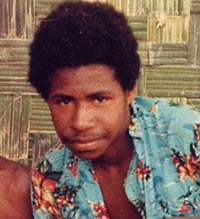Asaro, Upper Asaro in Papua New Guinea

Photo Source:
Anonymous
|
Send Joshua Project a map of this people group.
|
| People Name: | Asaro, Upper Asaro |
| Country: | Papua New Guinea |
| 10/40 Window: | No |
| Population: | 88,000 |
| World Population: | 88,000 |
| Primary Language: | Dano |
| Primary Religion: | Christianity |
| Christian Adherents: | 99.00 % |
| Evangelicals: | 23.00 % |
| Scripture: | New Testament |
| Ministry Resources: | Yes |
| Jesus Film: | Yes |
| Audio Recordings: | Yes |
| People Cluster: | New Guinea |
| Affinity Bloc: | Pacific Islanders |
| Progress Level: |
|
Introduction / History
The Upper Asaro people live in the Eastern Highlands Province in the Goroka District of Papua New Guinea. Their mother tongue is Dano (Ethnologue code ASO), and many of the people also speak Tok Pisin, one of the national languages of PNG. The Upper Asaro live above the Asaro River Valley at an elevation of 1500-2300 meters (5000-7500 ft) on a mountain slope grassland with scattered trees. Their home is within a few hours' travel of Goroka, a major urban area, and they have easy road access by public transportation into this town.
What Are Their Lives Like?
Marriage partners are chosen from among non-relative Dano speakers or from neighboring language groups. The Upper Asaro are welcoming to those that marry in, speaking Tok Pisin with those that have not learned Dano. They are for the most part subsistence farmers, raising animals and crops with occasional hunting and gathering. Some of the people are wage-earners in Goroka and others raise coffee as a cash crop or produce to sell in the Goroka market.
Weather is cool in the mornings and intensely hot in the afternoons, when the men gather to play cards together and others go to Goroka to sell. They live in houses with roofs thatched from Kunai grass. There are no wells in the area; they access water from springs, streams, and the Asaro River.
What Are Their Beliefs?
They have had a strong Christian influence in the area for over 50 years, and 80-90% of them claim Christianity as their religion. The New Testament was completed in Dano in 1989 and is being used in some of the churches. Portions of the Old Testament have also been translated. Some traditional religion still exists among the older generation.
What Are Their Needs?
Their needs include further strengthening and equipping of church leaders, literacy development, preschools, and community development, such as clean drinking water, better roads and bridges, better nutrition for children (especially 2-4 year old children), and more economic opportunity to pay for schooling and medical care.